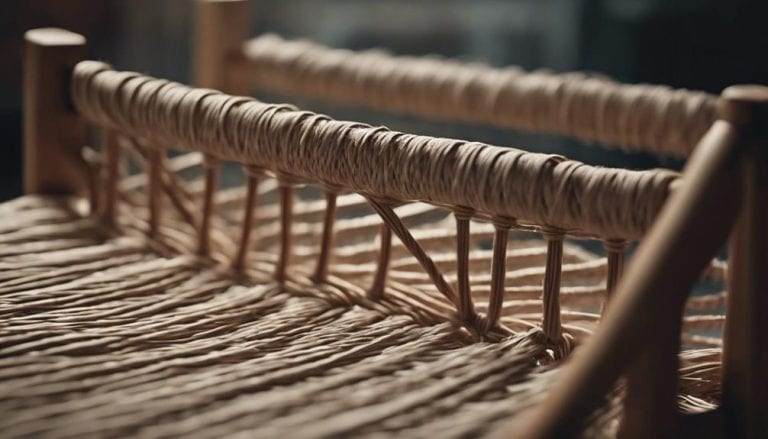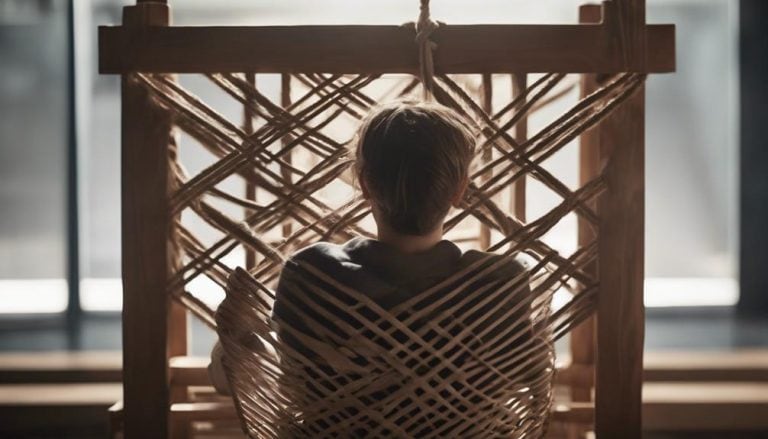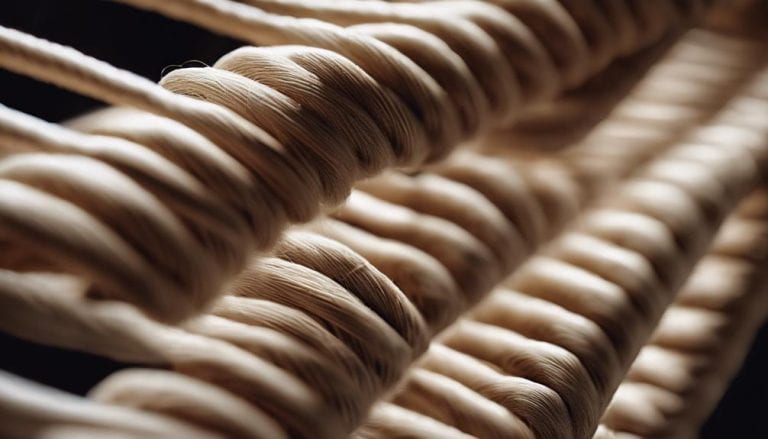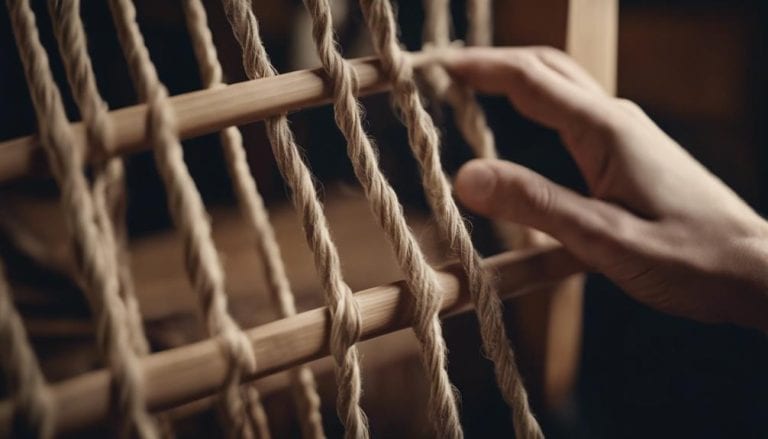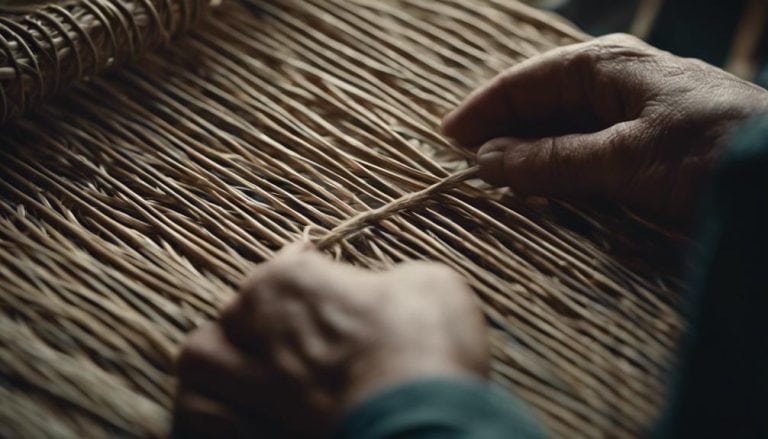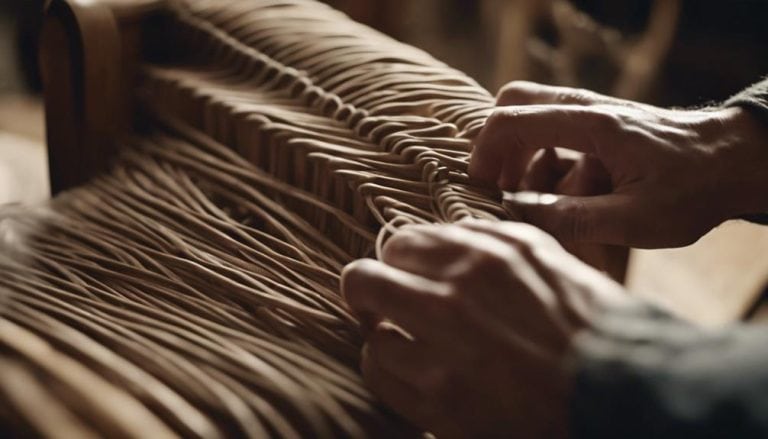Tips for Crafting With Danish Cord
Crafting with a Danish cord is like embarking on a delicate dance; every move must be deliberate and precise to create a harmonious outcome. Each step plays a crucial role in the final result, from selecting the right materials to mastering intricate weaving techniques.
As I share practical tips and insights for navigating the world of Danish cord crafting, you’ll discover how attention to detail and careful execution can elevate your projects to new heights. So, are you ready to unlock the secrets of weaving with Danish cord and take your crafting skills to the next level?
Crafting with a Danish cord involves weaving it through frames. Start by securing the cord tightly and maintaining even tension for a neat finish. Experiment with different weaving patterns to create unique designs and textures in your projects.
Key Takeaways
- Choose high-quality Danish cord materials for durability and authenticity.
- Master basic weaving techniques like front rail weaving and side-to-side weaving.
- Explore advanced patterns and techniques to showcase creativity and skills.
- Maintain Danish cord creations with regular care and seek professional repairs when needed.
Choosing the Right Danish Cord Materials
When embarking on a crafting project involving Danish cord, the first crucial step is selecting the right materials to ensure a successful and visually appealing weaving outcome. Danish cord, typically crafted from tightly rolled brown paper, offers a durable and sustainable option for weaving.
Available in laced and unlaced types, both measuring 1/8 inch in diameter and 180 feet per pound, this material provides versatility and strength when redoing a seat. It’s vital to consider the weaving details of the original chair to ensure a proper match for the seat project. Opting for high-quality Danish cord materials is essential to achieve a strong and visually appealing woven seat.
Proper preparation and understanding of the different types of Danish cord materials are crucial for ensuring the success of the weaving project. Selecting the right Danish cord materials sets the foundation for a masterpiece that not only exudes elegance but also withstands the test of time.
Mastering Basic Danish Cord Weaving Techniques
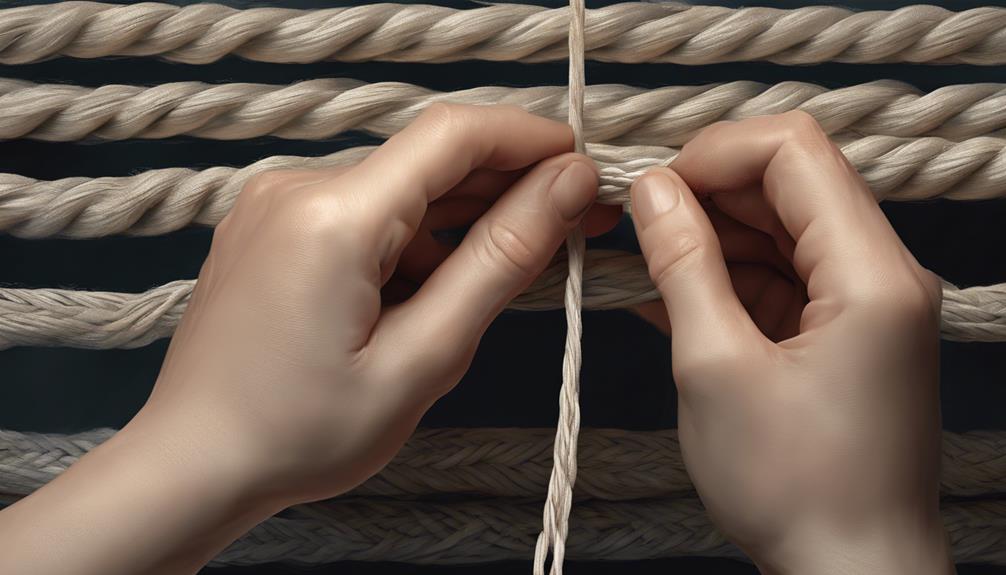
Delving into the art of Danish cord weaving unlocks a world of intricate patterns and durable techniques waiting to be mastered. As I navigate the weaving process, understanding the nuances of Danish cord weaving is essential to ensure a successful project.
Here are some key points to keep in mind:
- Front Rail Weaving: Start by weaving the cord across the front rails of the chair for structural support.
- Back Rail Wrapping: Wrap the cord around the back rails to enhance the aesthetics and provide additional stability.
- Side-to-Side Weaving: Mastering the side-to-side weaving technique is crucial for creating a durable and visually appealing Danish cord seat.
- Tool Utilization: To facilitate the weaving process effectively, use specialized tools such as a hammer, knife/scissors, woodblock, and the appropriate amount of rope cord.
Exploring Advanced Weaving Patterns
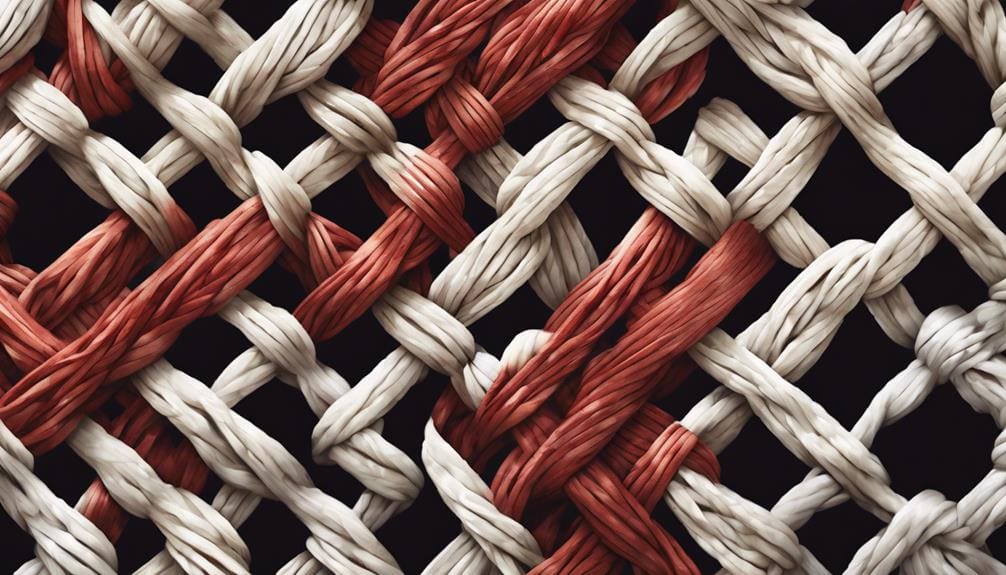
Navigating the intricate world of Danish cord weaving opens the door to exploring advanced weaving patterns that elevate the artistry and complexity of traditional cord seats. Advanced techniques in Danish cord weaving encompass many intricate designs such as herringbone, twill, and checkerboard patterns.
By skillfully adjusting tension levels, weavers can imbue their seats with unique textures that captivate the eye and enhance the overall aesthetic. Introducing a spectrum of colors into the weaving process can further enrich the visual impact, adding depth and dimension to the final creation.
For those seeking to push the boundaries of traditional weaving, techniques like twining, braiding, and knotting offer avenues to infuse creativity and personality into their Danish cord seats. Embracing these diverse weaving patterns showcases technical prowess and allows for personal expression, transforming Danish cord seats into contemporary works of art that exude sophistication and innovation.
Maintaining and Caring for Danish Cord Creations
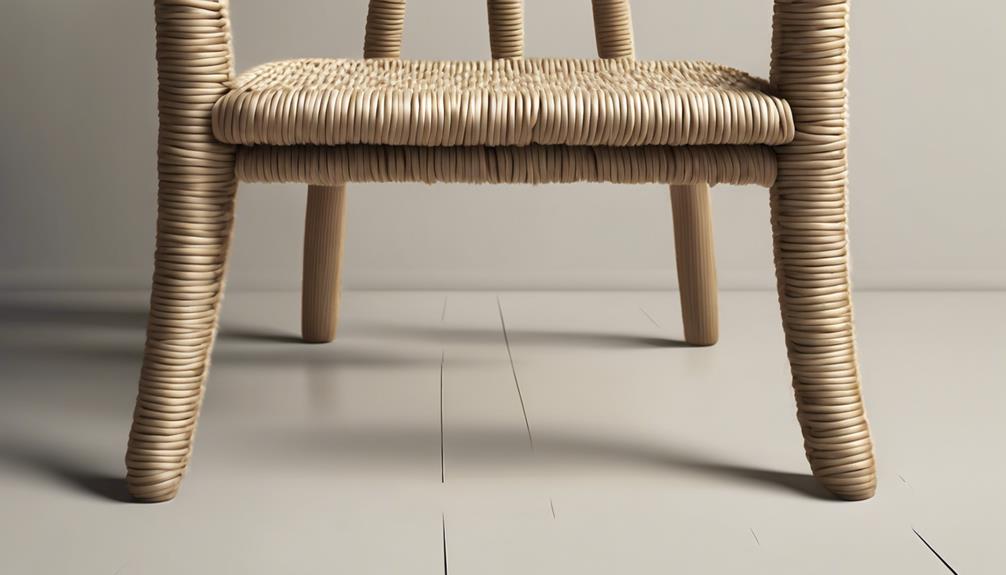
Crafting Danish cord creations requires meticulous care and attention to ensure longevity and aesthetic appeal.
- Regular dusting with a soft brush or cloth is essential for maintaining Danish cord creations.
- Avoid direct sunlight exposure to prevent fading and weakening of the cord material.
- Clean spills promptly with a damp cloth and mild soap, avoiding harsh chemicals.
- Periodically inspect for wear and tear, seeking professional repairs to preserve the piece’s integrity.
Ensuring the maintenance and care of Danish cord furniture is paramount to upholding its beauty and functionality. Following these simple yet crucial steps can safeguard your creations for years.
The delicate nature of Danish cord necessitates a gentle touch and a proactive approach to upkeep. Whether it’s a chair, a table, or any other piece, treating it with the respect it deserves will reward you with enduring elegance and style.
Troubleshooting Common Danish Cord Crafting Issues
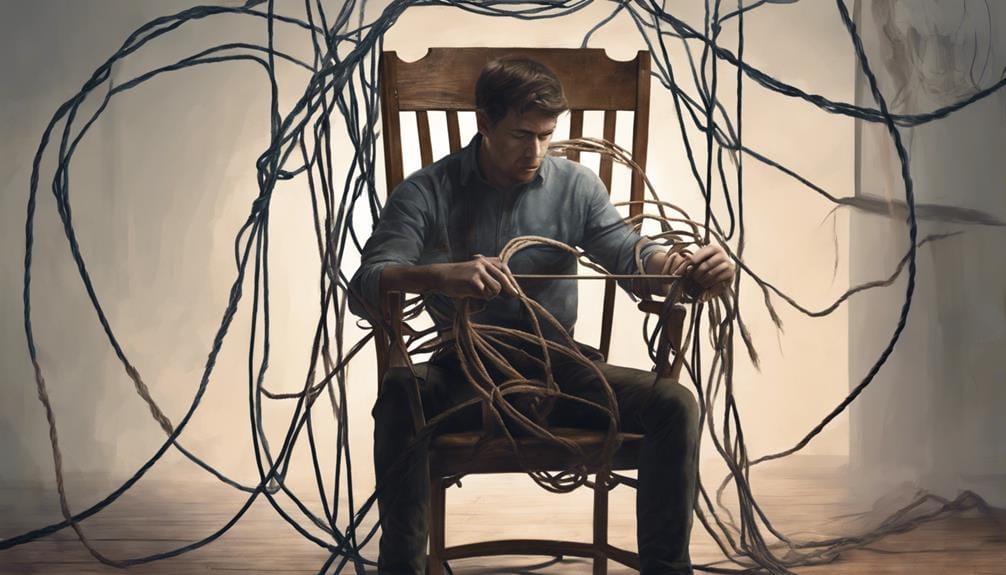
As we explore the intricacies of troubleshooting common Danish cord crafting issues, it becomes evident that maintaining proper tension in the weave is crucial for achieving a flawless and durable final product. When encountering problems like uneven tension, cord unraveling, or insufficient spacing between cords, mastering cord weaving techniques and seat weaving skills is essential. Wrapping techniques ensure a smooth and uniform finish on the front and back rails. To assist in troubleshooting, consider the following table:
| Issue | Solution |
|---|---|
| Uneven tension in the weave | Adjust tension gradually, ensuring all cords are evenly spaced. |
| Cord unraveling or slipping | Use a fid to secure cords properly, preventing unraveling during weaving. |
| Insufficient spacing between cords | Re-weave with attention to spacing, allowing for a more flexible seat. |
| Incorrect wrapping techniques | Practice proper wrapping methods to avoid bunching or gaps in the weave. |
Frequently Asked Questions
Which Is Better Laced or Unlaced Danish Cord?
Laced Danish cord offers intricate texture for visual appeal in weaving, adding depth to designs. Unlaced cord presents a cleaner, modern look for minimalist styles. Pros and cons depend on personal taste and weaving techniques, determining the best fit for each project.
How Far Apart Do You Space Danish Cord?
For achieving optimal cord tension in Danish cord weaving, spacing is crucial. Consistent gaps, typically 1/8 to 3/16 inch apart, ensure sturdy chair repair and intricate weaving techniques. Proper spacing enhances both structural integrity and visual appeal.
How Long Does Danish Cord Last?
Danish cord’s durability factors ensure long-lasting quality. Regular maintenance, like cleaning and avoiding excessive weight, prolongs its lifespan. Consider professional reweaving to maintain authenticity and structural integrity when replacement is needed.
How Much Danish Cord Do I Need?
I need to estimate the Danish cords required for my chair weaving project. I must consider the chair size, weaving pattern complexity, and color options. By accurately estimating quantities and having extra cord on hand, I can avoid beginner mistakes.
Conclusion
In conclusion, crafting with Danish cord requires patience and precision, but the result is worth the effort. Remember, practice makes perfect when mastering weaving techniques and creating stunning designs.
With the right materials, techniques, and care, your Danish cord creations will stand out and impress. So, don’t be afraid to dive in and start weaving – the possibilities are endless!


